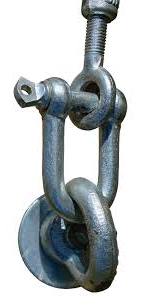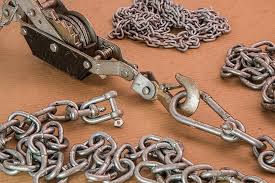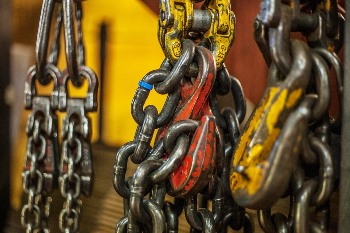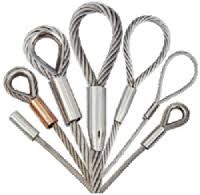Lifting Equipment Checklist Template
What Is A LOLER Checklist Template?
The information provided on this page has been curated for guidance purposes only and is not to be construed as approved custom and practice. No action should be taken solely on the information outlined in this content. Please consult the Lifting Equipment Engineers Association (LEEA) for the latest recommended working practices.
In addition, you should also reference the following publications available from the Health and Safety Executive:
Thorough Examination of Lifting Equipment

LOLER Inspection Checklist In Practice
Lifting Accessories Inspection Checklist
LOLER Inspection Checklist Template
A lifting equipment checklist template along with a lifting equipment inspection register is an essential tool for operations manager with responsibility for ensuring safe operations in their workplace. The enable managers to monitor the inventory levels of various types of lifting equipment they have, monitor serviceability and location of their lifting gear and the managers who are responsible for it.
In essence, the lifting equipment checklist template and the lifting equipment register enables managers to assess and manage risks arising from the use of lifting gear in their workplace. The scope and types of lifting gear are very diverse and covers any item of equipment or accessories used with that equipment to lift, move or pull loads eg:
- Hand, electric or pneumatically operated hoists
- Lifting equipment accessories like shackles, slings, eyebolts, chains, wire ropes, lifting beams and pulleys
- Personnel access equipment including MEWPS (mobile elevating work platforms)
- Harnesses and fixing anchors used to prevent falls
- Forklifts
- Cranes
- Vehicle hoists
- Passenger elevator lifts
The Lifting Equipment Register Template
A LOLER checklist template forms the basis for the hoist safety inspection checklist or register can be provided in paper or electronic form. However, online lifting equipment inspection software solutions now provide the optimal means for managing theses critical processes. Here are a few examples of the types of recorded elements that feature in a contemporary LOLER checklist template on an onsite software system like OnSiteForm.
 1. Operations managers are responsible for ensuring that all items of lifting equipment under their responsibility are identified and logged on a LOLER checklist template. The resister will also track auxiliary items like slings, eye bolts and shackles as well.
1. Operations managers are responsible for ensuring that all items of lifting equipment under their responsibility are identified and logged on a LOLER checklist template. The resister will also track auxiliary items like slings, eye bolts and shackles as well.
2. Operations managers must provide a detailed lifting equipment list and arrange a thorough examination schedule for each item in the list.
3. Operations managers must ensure that equipment used for lifting personnel is subject to a thorough examination. This examination must be carried out by a competent person at a minimum 6 month interval using a LOLER inspection checklist.
4. Operations managers must ensure that equipment used for lifting non-personnel “dead weight” is subject to a thorough examination. Again, this needs to be conducted by a competent person at a minimum 6 or 12 month intervals. Shorter intervals may be deemed appropriate in the manufacturers’ service manual for a particular piece of lifting gear, its relative usage, age or the conditions it has been operating in.
5. Operations managers must ensure that equipment is routinely maintained and inspected. In addition, managers must record all inspection and maintenance activity for each item of lifting equipment. Those records must be maintained throughout their service life. They must also include details of when the piece of lifting equipment was in service, under repair and maintenance and withdrawn from service and scrapped.
6. Operations managers must ensure that all third party service providers engaged to repair, maintain install and inspect lifting equipment possess all the requisite competencies, accreditations and public liability insurance to do so.
7. Operations managers must ensure that all third party service providers engaged to repair, maintain install and inspect lifting equipment possess all the requisite competencies, accreditations and public liability insurance to do so.
8. Operations managers must ensure that operatives required to use lifting equipment in their workplace have received the necessary training to ensure that they are competent to use the equipment.
9. Operations managers must ensure that all lifting carried out in the workplace is planned, assessed, carried out and supervised by competent persons.
10. Operations managers must report all incidents including a lifting equipment failure. Accident reports must be in accordance with the HSE reportable incidents procedure under the RIDDOR – Reporting of Injuries Disease or Dangerous Occurrence Regulations.
LOLER Inspection Checklist Template
The LOLER Lifting Operations Lifting Equipment Regulations place a legal responsibility on organisations using lifting equipment in their workplaces that it is:
1. Of robust construction and suitable to use for purpose it is intended and carries clear, safe working load information.
2. Installed and sited in such a way as to minimise risks eg falling objects.
3. Used in a safe manner with work planned, managed and carried out by competent employees.
4. Inspected and thoroughly examined by competent persons at the recommended intervals for a particular piece of lifting equipment.
Thorough Examination Reports
The findings and outcomes of thorough examinations that have been carried out on lifting gear should use a
Inspection Records In practice, inspections are almost always carried out in between a thorough examination. As mentioned earlier, there are many factors which govern the relative frequency with which lifting equipment inspections should be carried out. These inspections may be daily, weekly or monthly to ensure that any defects are identified and rectified as soon as possible and records maintained in a lifting equipment register.

